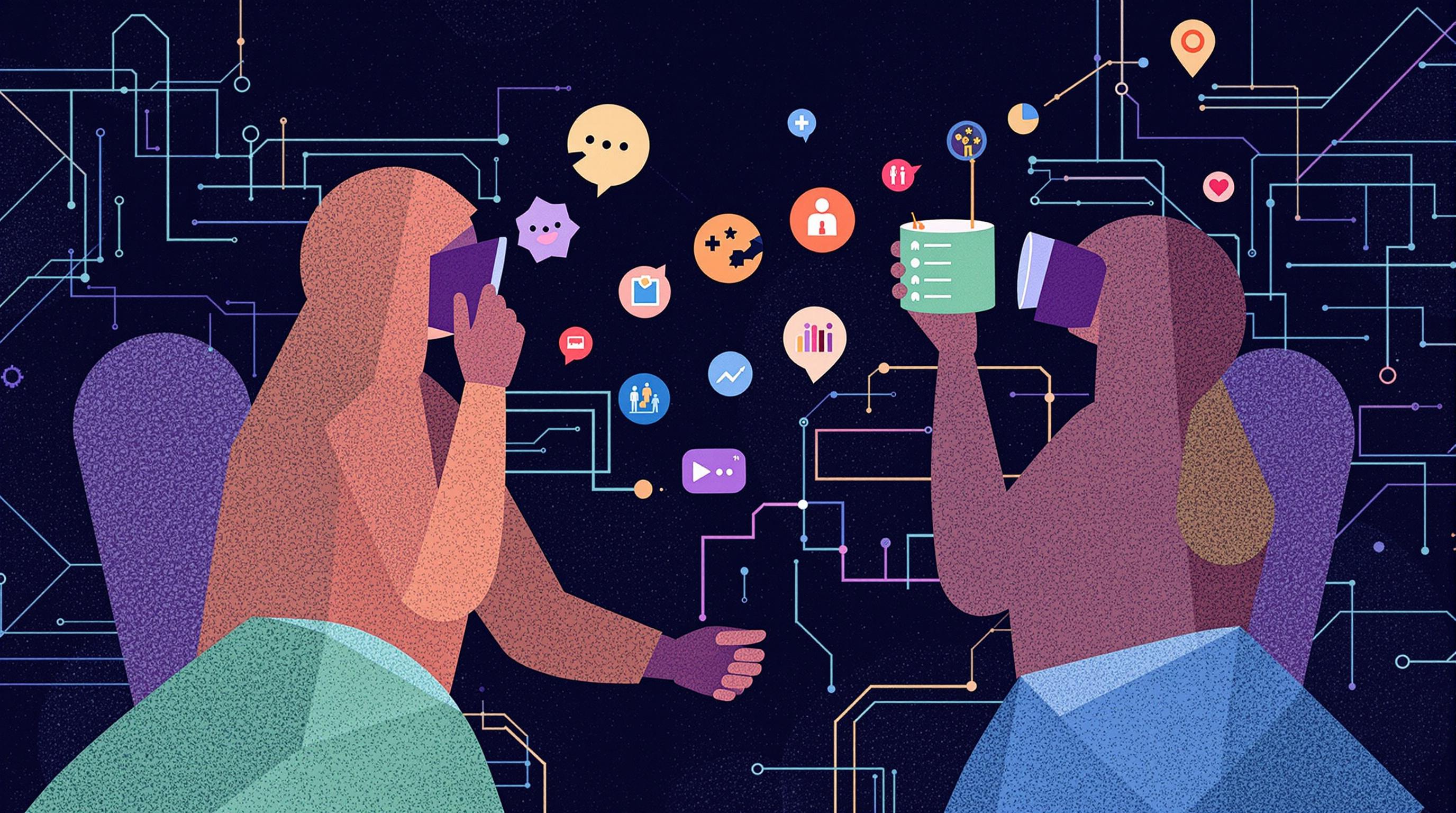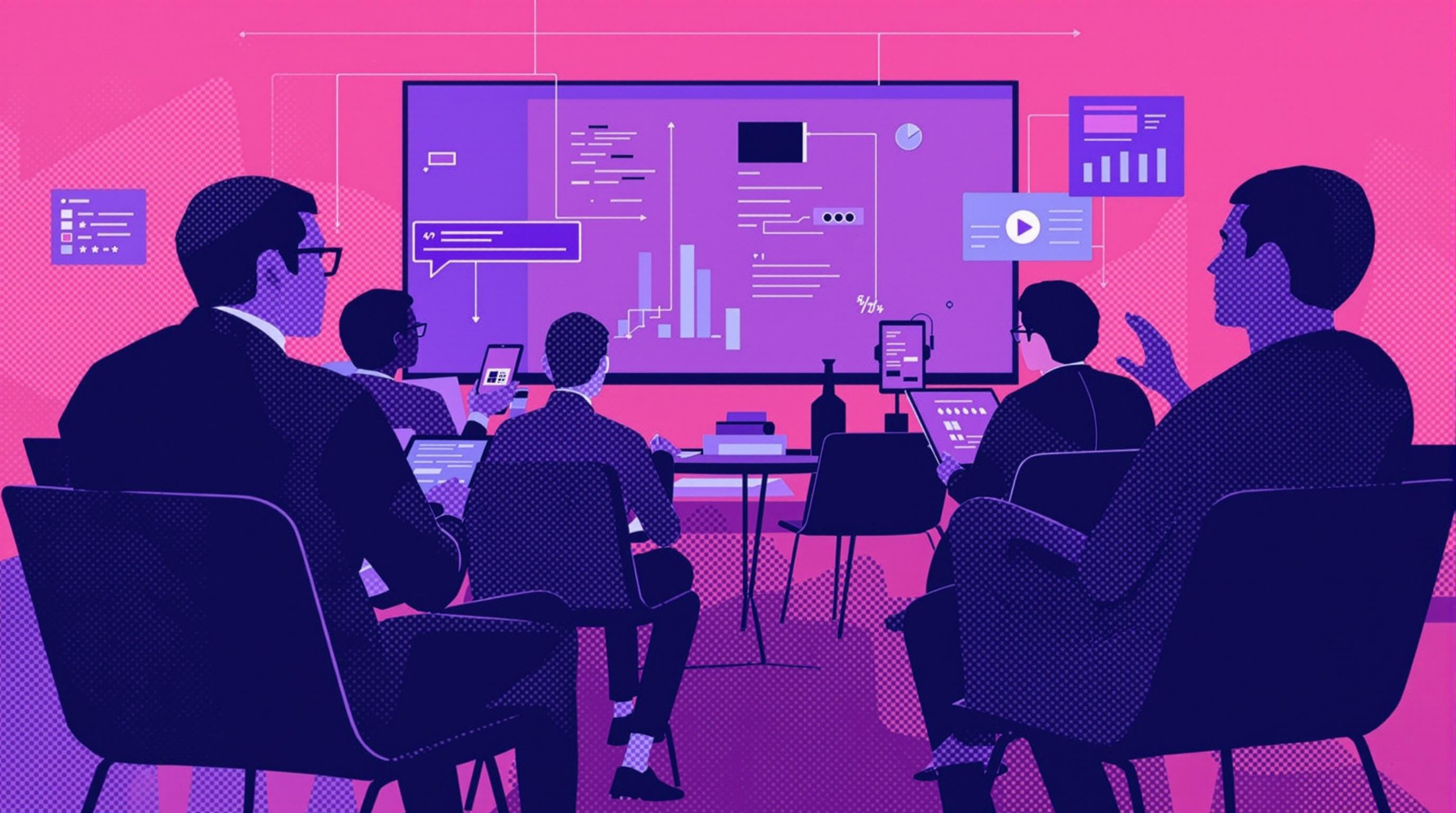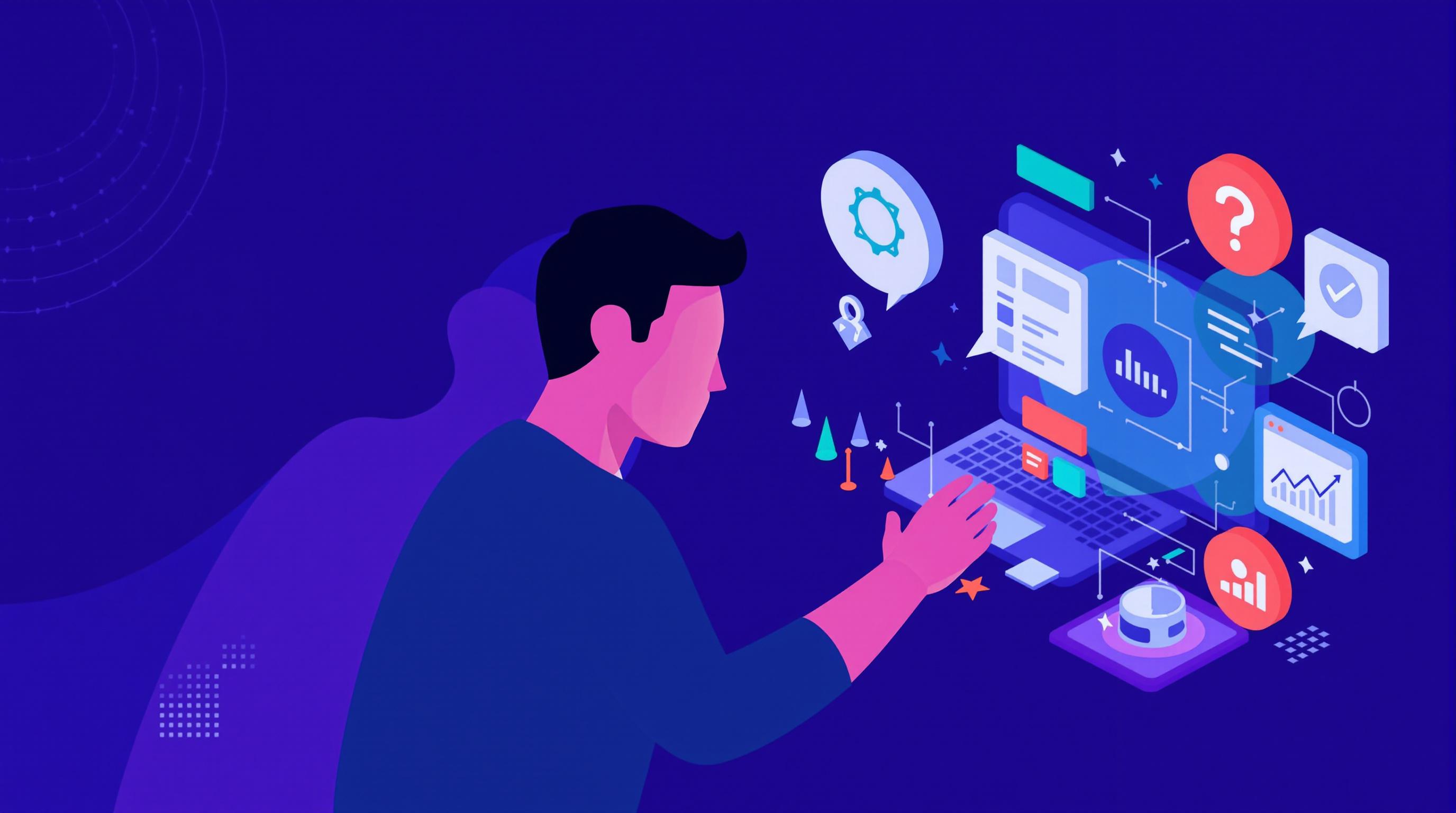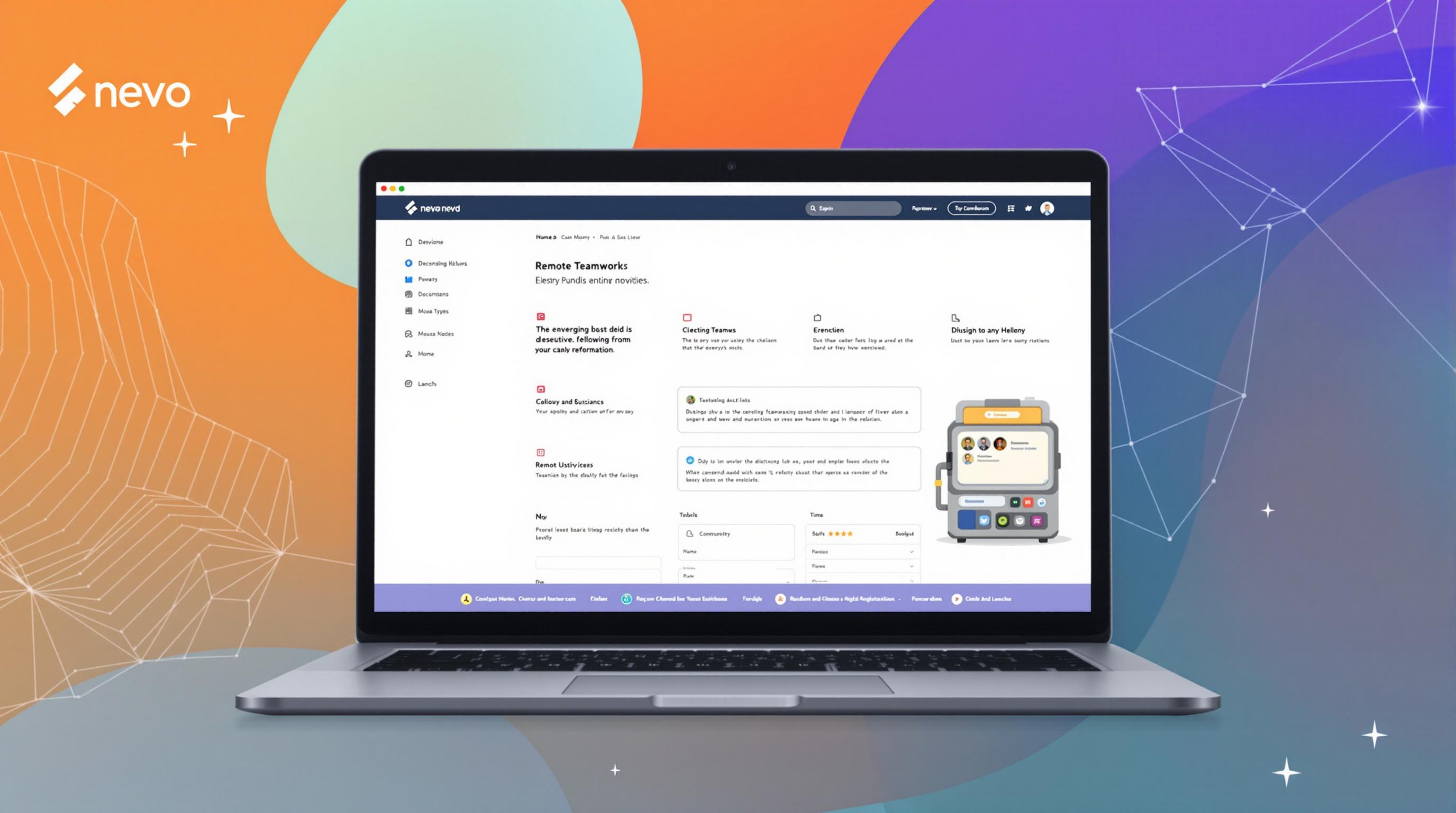Related Articles
- Top 6 Emerging AI-Powered Project Management Tools Released Since 2019 That Outperform Legacy Giants
- 5 Underrated SaaS UX Platforms From the Last Five Years That Outperform Popular Giants in User Delight
- Silent Shifts: How Forgotten Legacy Software Is Quietly Reshaping Modern Tech Business Models
- 7 Underrated Cloud Collaboration Tools Released Since 2019 That Rival Industry Giants
- Top 6 SaaS UX Tools Released Since 2019 Revolutionizing User Engagement Strategies
- Top 6 Rising Single Sign-On Platforms From 2019 to 2024 Dominating Speed and Scalability Rankings
When Algorithms Decide the Meeting Agenda: The Hidden Influence of AI on Team Interactions and Outcomes
When Algorithms Decide the Meeting Agenda: The Hidden Influence of AI on Team Interactions and Outcomes
Algorithms are silently shaping how teams decide their meeting agendas, influencing not only what gets discussed but also the dynamics and outcomes of these interactions. This article explores the various ways AI drives these decisions, highlighting both the benefits and the hidden challenges it presents for teamwork.
The New Silent Organizer: AI’s Role in Mapping Meeting Agendas
Imagine stepping into a conference room where no one has prepared the agenda. Instead, an AI system has already analyzed past meetings, project timelines, and email threads to piece together the topics that need addressing. This isn’t some far-off future – companies like Microsoft and Google increasingly rely on AI-driven tools such as Cortana and Google Calendar to suggest meeting agendas and prioritize discussion points, saving precious time.
The Quiet Power Behind the Scenes
What’s fascinating is that these AI algorithms aren't just merchandising convenience; they subtly contour the dynamics within teams. The selection and order of topics can prioritize certain voices and perspectives, sometimes unknowingly shaping decision-making processes. When algorithms highlight some issues over others, power dynamics in meetings can shift — thoughtfully or not.
Case Study: The Corporate Experiment
At a mid-sized tech company in Seattle, an AI tool was introduced to generate daily scrum meeting agendas. Initially, the team appreciated the objectivity and pace but analysis after six months revealed that junior staff topics received less airtime, as the algorithm prioritized issues flagged by senior developers’ emails and comms. This inadvertently sidelined fresh ideas because their contributions were underrepresented in the data the AI learned from.
Conversational AI and the Art of Casual Scheduling
Let’s chat for a moment about how AI handles that deceptively simple question: "What should we talk about?" Some of these systems, like the chatbot “MeetBot,” make agenda-setting playful and quite interactive by soliciting team input before meetings, blending automation with human creativity. It’s like having a digital secretary who’s also a friendly teammate.
Statistics Speak Up
According to a 2023 survey by the Project Management Institute, companies using AI-supported agenda tools reported a 25% decrease in unproductive meetings and a 30% improvement in adherence to meeting timelines. These numbers shine a light on how AI can bolster efficiency but also prompt us to question what’s getting left out.
Lurking in the Data: Bias in Algorithms
Algorithms are only as unbiased as the data they train on. If historical meeting notes emphasize certain projects or staff members more, the AI continues this pattern, reinforcing existing biases. This is a crucial caveat because a misguided agenda powered by skewed AI can stifle diversity of thought, limiting innovation and engagement.
The Persuasive Edge: Why Embracing AI in Meeting Planning Matters
Think about the mountain of emails and messages your team exchanges daily. AI can sift through this avalanche and extract critical points to build a laser-focused agenda. By reducing redundant or irrelevant topics, AI helps teams stay on track, enhances decision-making, and keeps meetings lean — an undeniably persuasive argument for adopting these technologies.
Let’s Get Real: The Human Factor
Nevertheless, relying excessively on algorithms without room for human override can cause frustration. What if the AI overlooks an urgent but less documented issue? People crave spontaneity and flexibility, especially in creative environments. Thus, blending algorithmic suggestions with human judgment produces the most balanced outcomes.
Storytelling: The Meeting That Couldn’t Wait
Once upon a time, at a design firm, a last-minute client crisis arose, demanding immediate attention. Alas, the AI-driven agenda had not flagged this because the client was new and lacked historical data inputs. The team had to pause, pivot on the fly, and manually reset the meeting priorities. This scenario underscores the essence of maintaining human oversight and communication agility.
Scrutinizing Outcomes: The Hidden Impact on Team Interactions
When AI influences meeting content and flow, it also affects how team members interact. Some may feel empowered when the agenda includes their ideas, while others might feel marginalized if their topics never surface. Over time, this can change participation patterns and even employee morale.
Humor Break: The Overzealous Algorithm
Imagine an AI so eager to optimize your meeting that it schedules three back-to-back agendas packed to the brim, leaving no time for coffee breaks or laughter. While this is a fictional exaggeration, it pokes fun at the thin line between efficient automation and the loss of human charm in workplace culture.
Finding the Balance: Guidelines and Best Practices
Experts recommend designing AI agenda systems with transparency and inclusivity at their core. For instance, providing team members access to see and adjust the generated agenda encourages collaboration and trust. Additionally, periodic reviews to identify biases in AI decision-making keep meetings equitable and relevant.
Looking Ahead: The Future of AI in Shaping Team Dynamics
As AI tools become more sophisticated, their influence on meeting agendas will only increase. Future systems may integrate emotional analytics, tracking not just what needs to be discussed but also the team’s emotional state to craft agendas that improve engagement and well-being.
Conclusion: Embracing AI With Eyes Wide Open
Ultimately, AI’s hidden hand in deciding meeting agendas offers substantial benefits but also introduces challenges. Teams must stay vigilant about allowing algorithms to guide meeting flow while preserving human intuition and inclusivity to foster healthy, dynamic collaboration.




